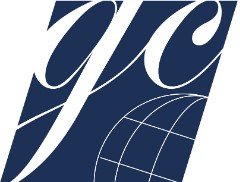Widespread protests following a polarizing election in Bolivia
Following the latest global wave of political protests and unrest, the situation in Bolivia has remained in a critical state since President Evo Morales announced his resignation.
On 20 October 2019, Bolivia held its general election, with President Evo Morales running for a fourth term after more than 13 years in office – the longest-serving leader in Latin America. Under the Emboldened Movement for Socialism (MAS) party, Morales is the country’s first Indigenous president, in a country where more than two-thirds of the population is Indigenous. His presidency has been marked by growing representation for Indigenous peoples in government as well as economic growth and poverty reduction. However, Morales has recently been criticized after he ignored referendum results that would have prevented him from holding more than two legal consecutive terms in Bolivia.
THE ELECTION
According to the Bolivian electoral system, a presidential candidate can be elected in the first round of elections if the absolute majority of voters elect them – 50 per cent of the popular vote – or if they have at least 40 per cent of the overall vote and are at least ten percentage points ahead of the second-place candidate. Should neither of these conditions be met, a second round of elections is held between the two candidates. During the vote count following the first round of elections on October 20, Morales was ahead of his opponent, opposition party leader and former president Carlos Mesa, but by less than ten percentage points. Before the vote count finished, there was an unexpected 24-hour pause. The following day, the final vote count was released, with Morales winning approximately 47 per cent of the vote, 10.6 points ahead of his opponent.
Soon after Morales announced his victory, cities in Bolivia were shaken by anti-Morales protestors, who stated that they had lost faith in the electoral system. Thousands of Bolivians gathered outside a hotel in La Paz where the votes were processed, electoral offices in Sucre and Potosi were torched, and the opposition group in the city of Santa Cruz called for a strike.
MORALES RESIGNS
On October 30, the Organization of American States (OAS) began to conduct “an analysis of the electoral integrity” of the Bolivian elections as part of an agreement with the government. More than a week later, the OAS released a report stating that they had found “irregularities” in the election and recommended that another election be held. In the wake of this announcement, Morales agreed to hold new elections. However, he resigned later that day after police forces refused to confront the protestors, with some even joining them, and Bolivia’s military chief calling on him to step down. Morales flew to Mexico the following day after its president, Andrés Manuel López Obrador, announced that he would grant political asylum to the former Bolivian president. Protests continued following the resignation announcement, with some celebrating Morales’s departure while others came out to voice their opposition.
ÁÑEZ STEPS IN
Questions regarding who would succeed Morales as interim president emerged after a number of resignations followed his, including his party’s vice president, Alvaro García Linera, who resigned with Morales. The next in line to assume the presidency would have been Adriana Salvatierra, the president of the Senate, but she also resigned the same day. This left Jeanine Áñez Chavez, the vice-president of the Senate, to declare herself as interim president on November 12 until new elections could be held. Even though the legitimacy of her claim remains a point of contention, Bolivia’s highest constitutional court has endorsed Áñez’s claim. However, Morales’ socialist party boycotted the Senate meeting where Áñez made her presidential announcement, meaning that the meeting lacked quorum, the minimum number of member attendees needed in order to conduct business. Morales himself has condemned Áñez’s presidency, calling it a “sneaky coup.”
Protestors, many of them Indigenous Morales supporters, came out shortly after Áñez’s succession and her new cabinet has been criticized for not having a single Indigenous representative, particularly given the country’s demographics.
THE FUTURE OF BOLIVIA
Bolivia currently finds itself in the midst of a constitutional crisis. Áñez announced the interim government’s intention to hold new elections soon but only time will tell whether new elections will be held within 90 days, as per the Bolivian constitution, and if they will be carried out in a transparent manner.
Of higher concern is the continued number of violent clashes against police and protestors in the country. Not only have these protests been divisive but they show no sign of stopping. Recently, eight pro-Morales protestors were killed in a clash with the police in Sacaba and at least 19 protestors have been killed in violent clashes with security forces since the October 20 election.
What will happen in the following days, weeks, and months in Bolivia is highly uncertain. The volatility that the country has been experiencing in the past few weeks points towards a rough time ahead. In addition to the worrying situation in Bolivia, recent waves of protests in other South American countries, like Chile and Ecuador, signal a turbulent future for the region.

